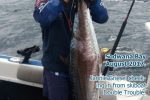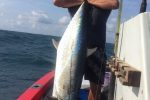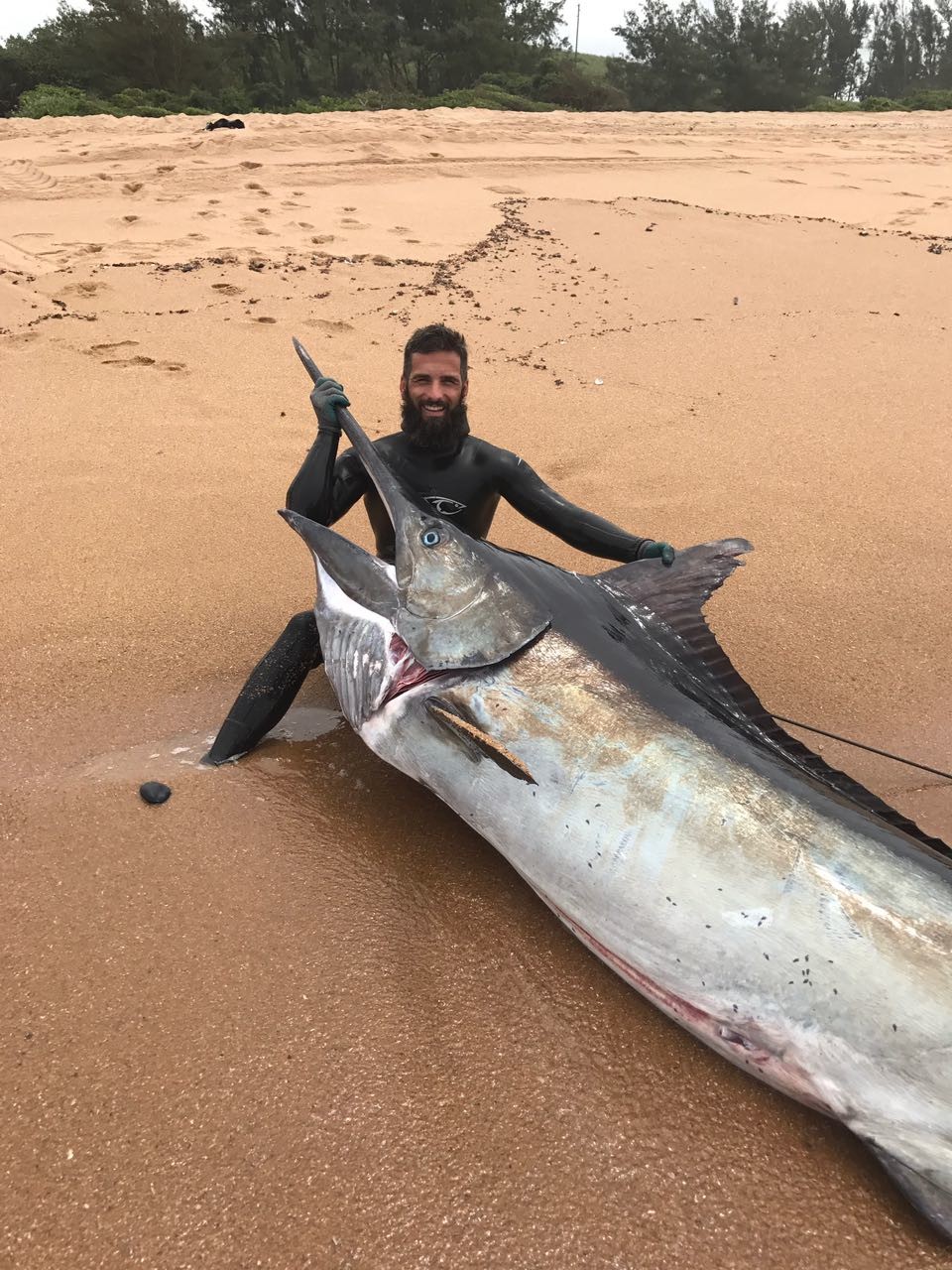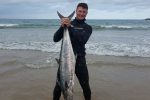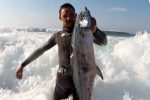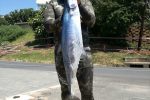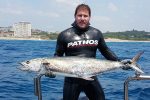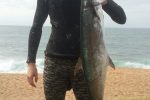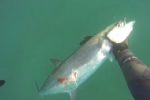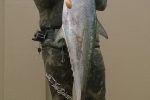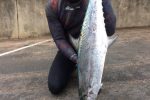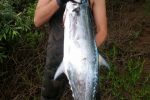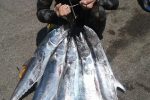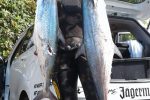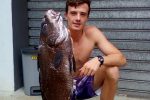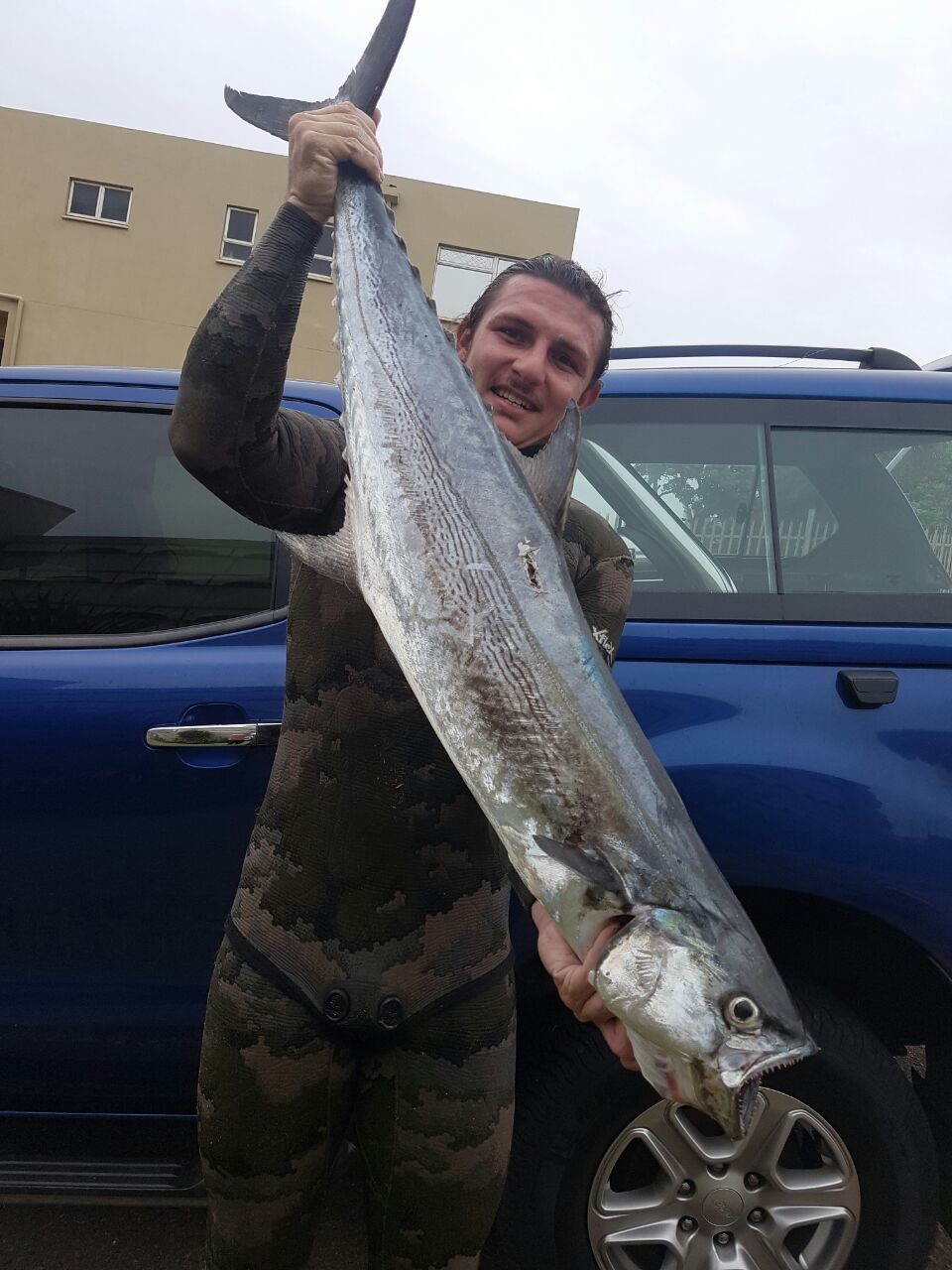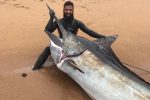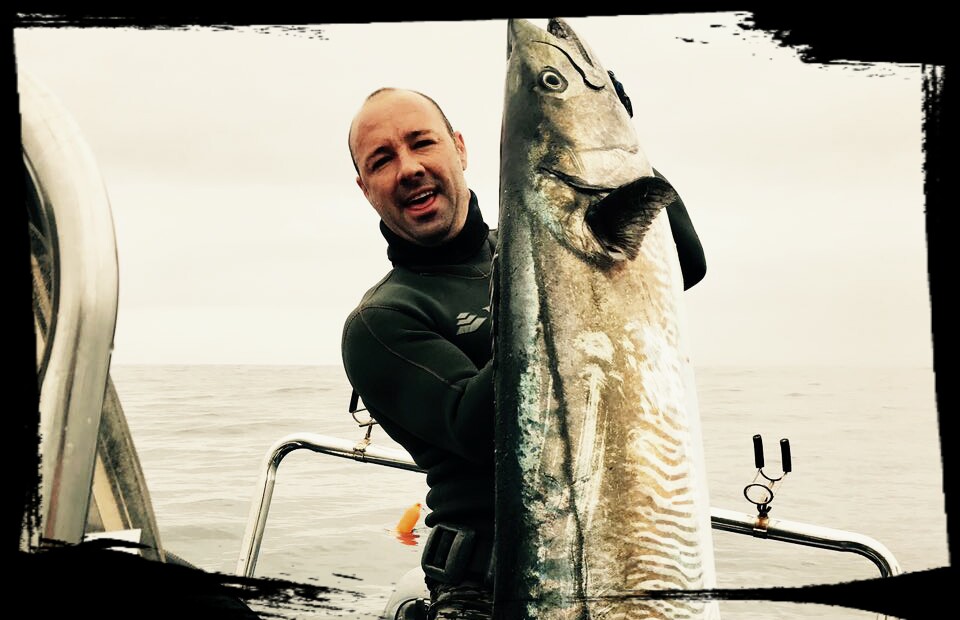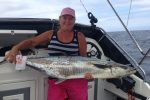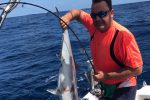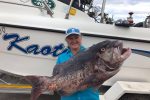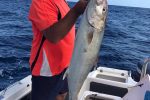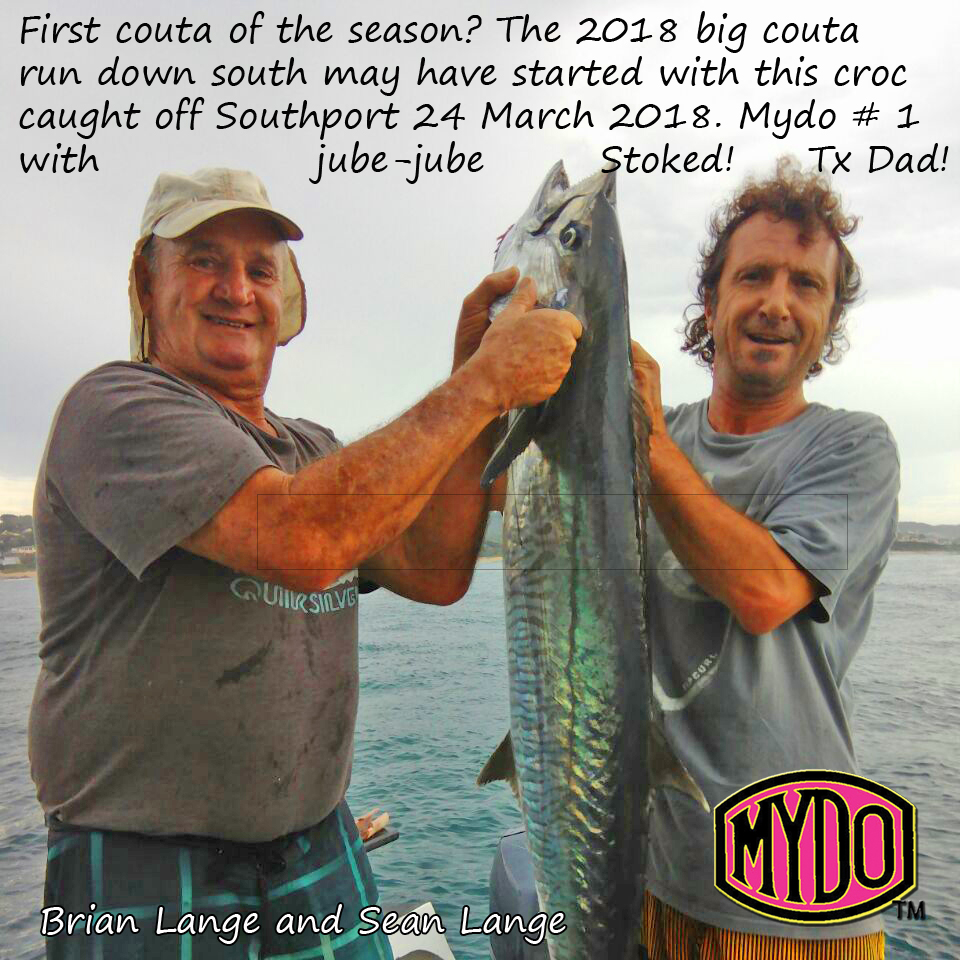
Fishing Addicts stock the Mydo
Fishing Addicts in Clairewood, south Durban, have recently taken delivery of the entire range of Mydo Fishing Lures. Other stockists of Mydos in Durban are Township Hyper up the hill in the Chatsworth area, and Danwood Fishing Tackle, in the north, in Tongaat. And Fisherman’s Warehouse slap bang in the centre of Durbs.
This is just in time for big ‘couta as the season hots up with the start of April. April has been the pattern for the big crocodile sized couta visiting our waters here in Natal. Well southern Natal particularly, as the bigger fish seem to like going the furthest south. Hibberdene to Port Edward. And even further – way down into the Transkei.

Team Mydo, fishing on the Niteshift, off Southport, on Sunday, got one of the first. At 25kgs it’s a lovely fish, taken using a #1 Mydo Baitswimmer rigged with a little baby bonito. Or jube-jube, as they are more commonly known by seasoned couta anglers in Natal.
The #1 has always been a favourite for fishing the 20m contours, where this fish came from. It takes care of the middle echelons of the water column. When fishing with live baits, it’s important to keep the little critters well away from each other. So one down deep, on a #2, 3 or 4, depending on wind and current. Then the #1 in the middle. And a float rigged bait right on top. Sometimes two. But fishing with these deadly live baits and having more than one rod per angler in the water, can ruin everything when the strike comes.
These fish empty a TLD25 two or three times. Fast. Before they start their never ending circles under and around the boat. You really have to be a polished team and real quick to give chase or you will be spooled. Sometimes the fish goes in the right direction and you can give chase leaving one or two live baits out. The floated ones are better for this because you can see where they are.
Mydos are rigged with serious 5X trebles that really hold on. Heavier wire on the droppers, and a nice long leader. The baitswimmers are designed for dead baits. They impart an action to the bait as it’s trolled along. Speeds of up to 6 knots are fine, if you have a nice fresh and strong bait like a ballyhoo (aka halfbeak).
For livebaits, either use some elastic to keep the bait in control and on the pin. Or use a Mydo Livebaitswimmer. This head has a powerful little hook up front, which you can delicately put through the top lip of your bait. This will keep him happy and swimming just the way you want him to. There are two sizes of Livebaitswimmer – the #1 at 0.7 Oz, and the #2, at 1.5 Oz. And there are 7 sizes of the Baitswimmer range.
These four shops stock Mydos in Durban…
https://www.facebook.com/fishingaddicts.Clairwood.Durban/
https://www.facebook.com/Township-Hyper-261941777199241/
https://www.facebook.com/danwoods.fishingtackle
https://www.facebook.com/FishermansWarehouseDBN/
You can find the entire dealers list here…
https://thesardine.co.za/mydo/
And if your local shop doesn’t stock Mydos, we will gladly sell you some through our online store. See menu above.
And…a gallery of couta caught on Mydos…enjoy!
Next time you are in the area, pop into Mohammed at Fishing Addicts in Durban. Fishing Addicts can be found at the map below…










